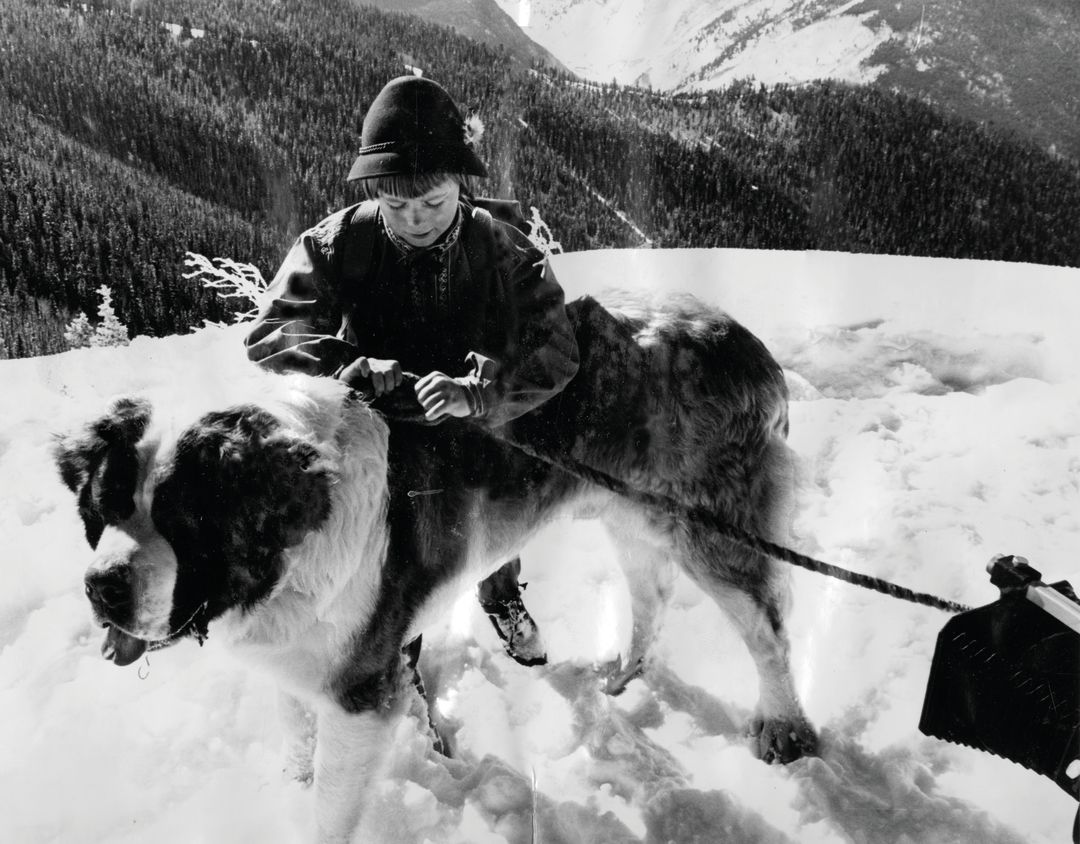The Wonderful World of Aspen

Susie Wirth with Mumbo atop Aspen Mountain in 1960
As writer Catherine Lutz notes in her cover story chronicling 75 years of lift-served skiing in Aspen, ski racing, and in particular the 1950 FIS Alpine World Ski Championships, first put Aspen on the the international map.
But one story that ended up on the cutting-room floor tells how the mastermind behind the World Champs (Aspen Skiing Corp general manager Dick Durrance) and another pivotal figure (ski school co-director Fred Iselin) used filmmaking as an innovative tool to burnish the fledgling resort’s image as the place to ski in America more indelibly into the minds of millions than a single race ever could.
It all started in 1948, when Iselin, leveraging a friendship with Aspen regular Gary Cooper, convinced Warner Bros. to produce Snow Carnival, a short featuring himself as a ski clown and filmed by Durrance, with the movie star as narrator. Seven years later, Durrance directed Ski Time in Aspen, a promotional reel that intersperses Warren Miller–esque ski racing footage with scenes of hearty and hale young people carousing about town at Wintersköl and the Hotel Jerome. That same year, Iselin also released Little Skier’s Big Day, a 21-minute film chronicling the idyllic life of Susie Wirth, a 6-year-old who lived at the Sundeck, where her parents were caretakers, and skied from the summit to school every morning followed by Iselin’s galumphing Saint Bernard, Mumbo (the resort mascot, a Lift One regular who rode the chair solo under a canvas blanket). That film caught the eye of Walt Disney, who hired Iselin to direct an hourlong dramatization that begins with little Susie skiing into town with mail from the Sundeck to earn a new pair of racing skis—and ends with the girl triggering an avalanche, followed by Mumbo (Bruno in the film) leading the whole town to her rescue.
Disney’s Fantasy on Skis opens with a prelude on the deck of a mountain chalet, a Hollywood sound stage where Walt, sporting a dapper pencil moustache and nattily dressed in a ski sweater with an open collar and neckerchief, delivers a monologue.
“You know, there are millions of human snowbirds who get the urge to ski and flock to the higher altitudes at the first sign of a snowfall,” he says. “There are also those who come to live and work in the snow resorts because they love the sport so much.... As for the youngsters, it’s only a short jaunt from the playpen to the ski slopes. As soon as they learn to walk, they’re on skis. These youngsters are the champions of the future. And this is their story. It takes place in Aspen, Colorado, and the parts are played by the townspeople themselves.”
Fantasy on Skis made its national television debut on Disney’s Wonderful World of Color on Feb 4, 1962, to more than 40 million rapt television viewers, then was packaged with the 1975 nationwide theatrical re-release of Disney blockbuster Snow White and the Seven Dwarfs. I watched it on YouTube.
In another bit cut from our cover story, Durrance’s son, Dave, recalls an Aspen childhood every bit as as storybook as Susie Wirth’s, how on Wednesdays the snowbanks around his school would be studded with skis, just as they were in Iselin’s Disney film, when classes let out at noon and pupils had their choice of afternoon activities: skiing, ice skating, or study hall. Of course they all chose the mountain.
“It was just a wonderful place to spend the afternoon,” he says.
A fantasy realized, then as now.













































